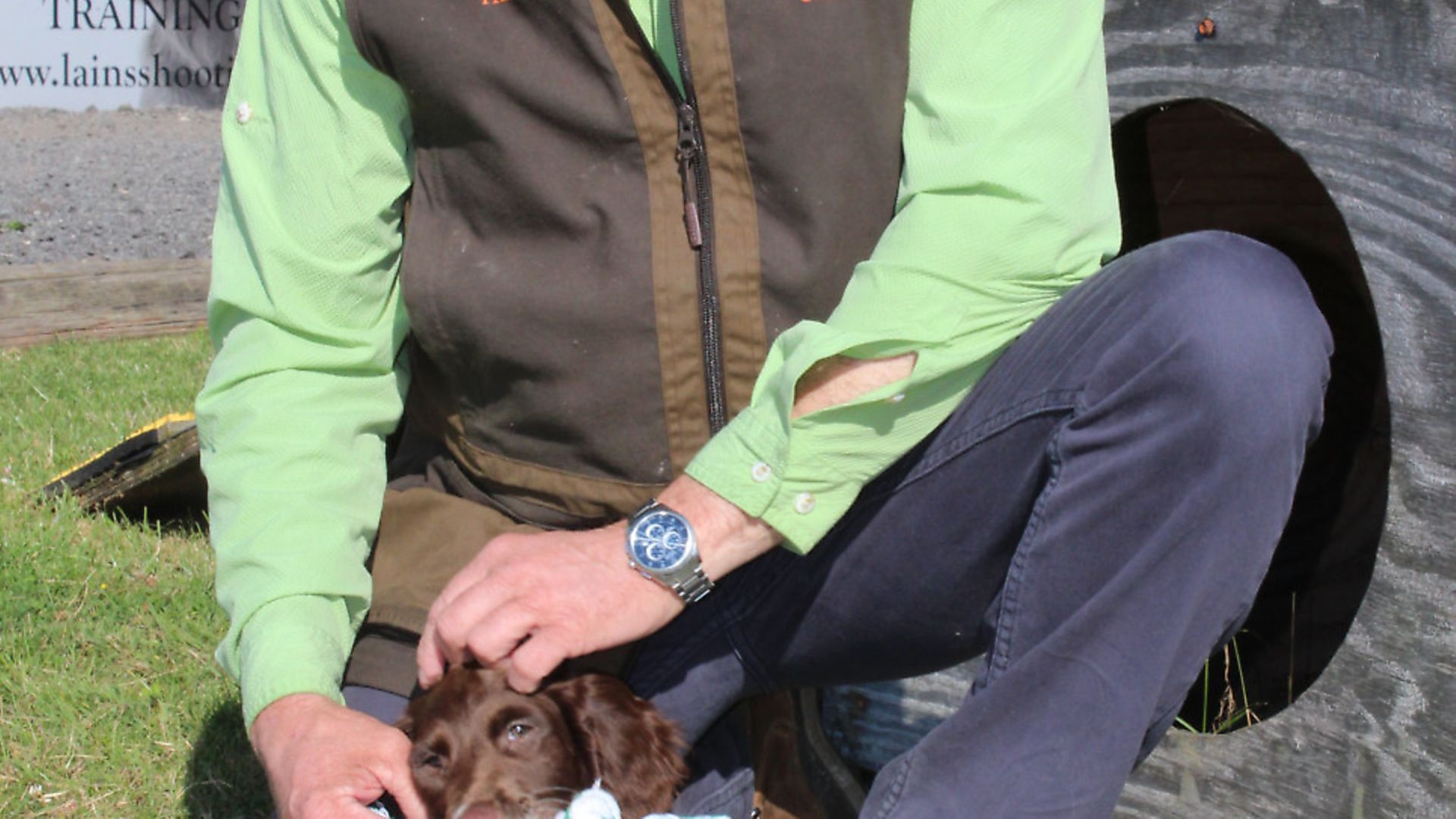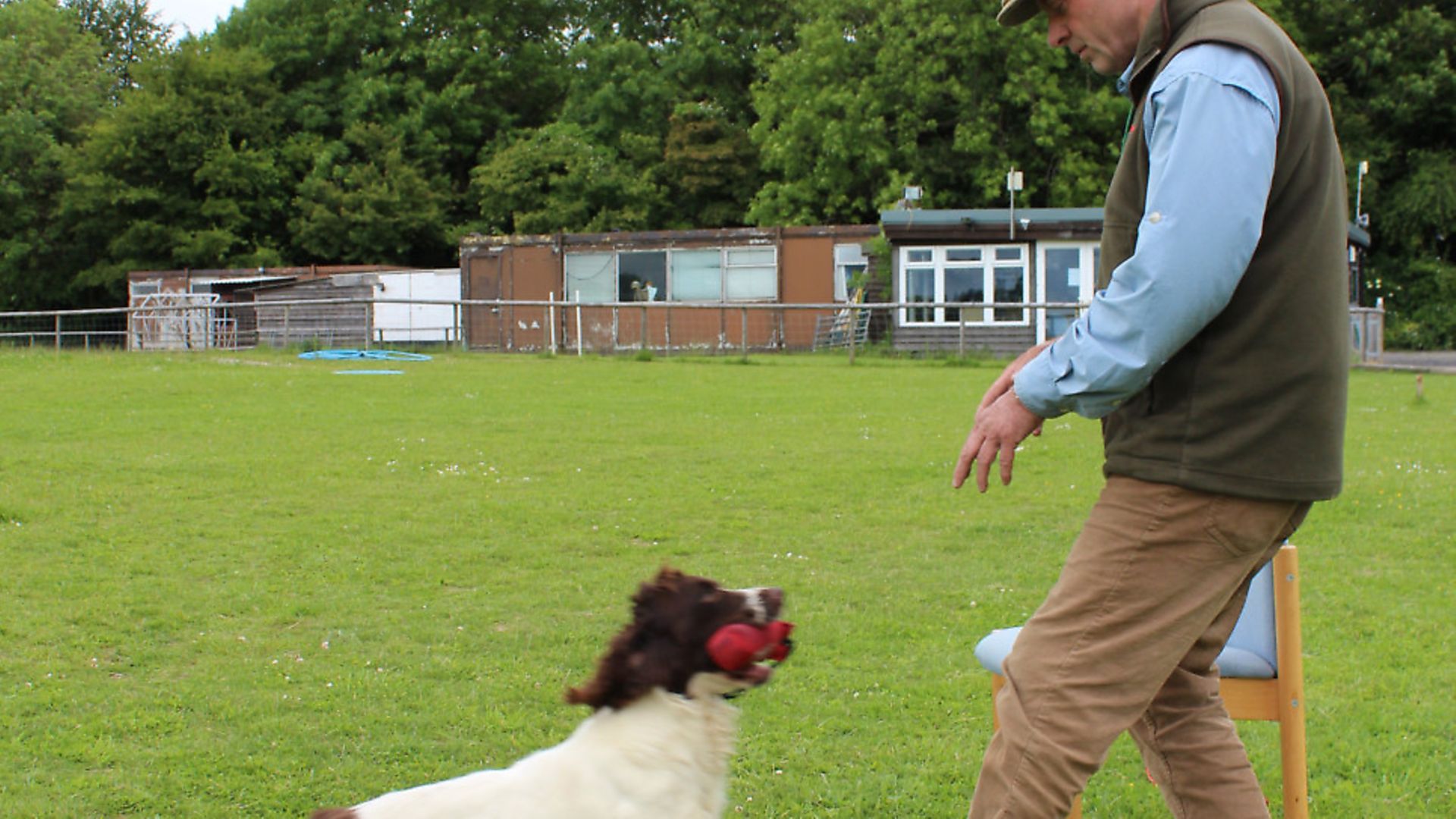The perfect retrieve and delivery to hand is one of the most important things you will teach your gundog - Howard Kirby tells us how to get it right, right from the start!
 credit: Archant
credit: Archant
The art of training a gundog can be a fascinating and highly rewarding thing to do. When things go right, it leaves us with that lovely warm fuzzy feeling and sense of satisfaction. When things don’t go so well, we can be left feeling just the opposite, frustrated and sometimes irritated.
To be successful as dog trainers, we first need to plan and avoid problems. Positive training requires that we encourage and engineer behaviours and reward them. Make no mistake, this is a real skill; it requires years of study and development for trainees to gain the knowledge they require to be successful as a dog trainer.
It is not uncommon to see handlers venting their frustrations at dogs, saying: “What is wrong with you, why don’t you just listen to what I say!” In the majority of cases, where things have gone wrong, it is neither the fault of the dog nor disobedience. Problems usually occur when the dog simply doesn’t understand what is being asked of it.
Training a dog is all about communication, and basic training establishes a common language between the trainer and the dog. It is essential that your dog learns a common language through command words such as come, sit, stay, fetch, and, of course, a thorough understanding of the word ‘no’. It’s important to emphasise that unless these command words are taught thoroughly, any subsequent training will be difficult.
Most of you will have noticed that the first four words I listed are associated with a positive outcome and reward. The final command word ‘no’ will need to be taught with a negative association.
DELIVERY TO HAND
A clean delivery to hand when working with gundogs is arguably one of life’s essentials. If you choose to compete with a gundog, a failure to deliver to hand will result in a loss of marks or elimination. Losing a cleanly picked bird will result in considerably more psychological pain.
There are a number of schools of thought and different techniques used when teaching delivery to hand. I’m going to use this article to explore some of them.
 credit: Archant
credit: Archant
THE NATURAL RETRIEVER
We are blessed in this country with gundogs that are bred with a natural instinct to retrieve. Most of this country’s top sires and dams will be products of a breeding program that selects for a natural desire to retrieve.
When you go to select your young puppy at about six to seven weeks of age, separate him or her from their litter mates, sit down on the floor, gently tease and then throw a rolled-up glove. Well-bred Labradors, spaniels and some HPRs will toddle out, pick up the glove and return it to your lap. This behaviour always fills me with joy, it makes me smile and of course, if you are selecting a puppy, this might be one to consider.
If your puppy is a natural retriever, then the way forward should be pretty easy. All you have to do now is ensure that you don’t mess it up. Unfortunately, this is not always the case. Family and domestic lifestyles often inadvertently teach the puppy an assortment of bad habits. Other dogs, small children and idiot men will chase and grab things from a young puppy. This will often lead to the puppy becoming possessive. Possession in a young pup will often result in it collecting an item and either teasing or running away from you.
There are many things to consider when introducing and raising a young puppy in a domestic household. Creating a safe, secure and enjoyable environment for the puppy to live in will make life much easier and help to reduce unwanted behaviours.
A puppy crate, dog room or puppy pen will be just perfect for this. This environment will ensure the puppy is safe, warm, can get up and move about freely and entertain itself with some appropriate chews.
There are an assortment of Kong-style products into which you can hide some of the puppy’s daily food ration, encouraging it to work away at the chew to obtain its food. Avoid giving the puppy soft toys that might cause problems. Soft toys can be eaten, destroyed, ragged, and some make a squeak and encourage the youngster to mouth, all of which might create bad habits.
With good day-to-day management in place, you can ensure that all of the pup’s interactions with dummies are engineered to encourage a nice retrieve and a delivery to hand. It’s really important to take this on board because if this early management and training is done correctly, it’s highly unlikely that you’ll get any future issues when retrieving.
 credit: Archant
credit: Archant
GETTING IT RIGHT
Here at Mullenscote, Linsey goes to great lengths to ensure all of our pups are encouraged to want and feel comfortable with bringing their ‘prizes’ to her. While they’re tiny, she sits down with them perched on her lap while the puppy quietly chews away at a ‘chew stick’. Having watched six youngsters go through this socialisation process over the last five years, there is no doubt in my mind that this ‘happy hour’ for both the puppy and Linsey are significant in the pups’ well-being and retrieving development. Time and effort spent encouraging your gundog to want to bring things to you is time very well spent!
Always try to think of things from the dog’s mindset. If it is to want to surrender its prize, its prey, to you, there has to be a flippin’ good reason. Affection or a food treat will often work. If schooled in the right environment, your puppy will be only too willing to exchange an old sock or tennis ball for affection or a food treat. This reward-based, positive reinforcement training, if conditioned well enough in early training, will keep things on track. It’s at this point where I dare to discuss the positive versus negative style of training. In my experience, we will need to have established an element of dominance over the youngster.
The subject of styles of training deserves a whole book dedicated to it and I’m not about to take it on in this article. However, as a direct result of my job, experience in the shooting field and the sport that I choose to compete in, I’m privileged on almost a daily basis to work and compete alongside the world’s most accomplished and successful spaniel, retriever, HPR and pointer and setter trainers. I can tell you that they are masters of establishing a relationship with a dog based primarily on reward, but occasionally using carefully managed levels of correction to balance the dog’s understanding of what its leader likes and dislikes. It is this carefully managed relationship that will see the dog wanting to please its owner.
What better way to please your boss than to take them a present? This relationship is built from the very first time you meet your puppy and continues through basic training. If done correctly, you will have established lines of communication enabling you to talk to your dog. This does not mean that you are now some spooky dog whispering type, just that you can communicate, “ohh well done that dog,” or the opposite being, “hey what do you think you’re up to.” Using tone of voice, body language and your physical presence you will be able to tell your dog whether or not you approve of a current behaviour.
Most delivery issues occur just three or four paces away from the handler. There are a few different types of non-deliverer: the first being a dog that, if you study it, you will see it is trying to please and approaches the handler with the best of intent. Watch these dogs carefully; quite simply, the moment that the handler communicates that they want the dummy in their hands, the dog releases it, usually onto the floor.
To fix this, you need to ensure the dog is close enough to you to be able to take the dummy. With careful consideration, we need to engineer that the dog brings the dummy to hand. There are several simple things you can do. Move encouragingly and rapidly backwards, turn your back and encourage into heel, sit down on the floor or in a Special Retrieving Chair. Ensure you don’t put your hands out or ask for the dummy until it has reached your hands. Give your release command ‘Dead’, take the dummy and then immediately, gently, quietly praise the dog for its action. We need for him to connect the reward to putting the dummy into your hand.
Sometimes it will be this straightforward, job done. More often than not, though, once a dog has started to ‘put down’, inexperienced handlers get in a fluster and exasperate the problem. Keep reminding yourself that if we were able to whisper in the dogs ear, “hey Fido, if you could just put this in my hand instead of dropping it on the floor I would be delighted,” the puppy would almost certainly answer, “why on earth didn’t you tell me that from the beginning, I’ve been worrying my self sick every time you throw the dummy and say fetch. I rush out pick it up and as soon as I start to come back you turn into a lunatic. Flapping your hands, blowing on the whistle and shouting at me, to be honest I’m starting not to like bringing stuff to you.”
This article is running away from me and I’m going to have to continue with the rest next month. We’ll take a look at what to do if the dog picks up the dummy and just says ‘No’! I hope it’s getting you thinking and you will join me with part two next month. In the meantime, keeeep training!
 credit: Archant
credit: Archant